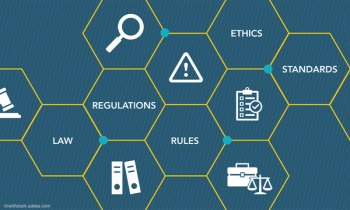
Audits: Why They Happen and What Your Medical Practice Should Do
It’s important to make sure you know who is asking for charts and the reason for audit before shipping off requested documents.
Physician practices are audited all the time. It may even be considered a routine occurrence in your office. I am certainly seeing more clients than ever being asked to send in charts and other documents for review. Not all audits are routine, however, and it’s important to make sure you know who is asking for charts and the reason for audit before shipping off requested documents.
When you receive an audit demand, look for the following red flags:
1. Have you recently expanded into new services or items such as offering durable medical equipment (DME) or acupuncture services?
2. Have you switched your billing company, personnel or billing practices? This can mean a switch to a new system or following new guidelines which you believe apply to your practice.
3. Has an employee with knowledge about your billing practices recently left? Was this departure on good terms?
4. Has anyone questioned your supervision standards or other components of your practice which may relate to billing and reimbursement?
5. Have you had a visit from a payer representative asking questions and requesting an “educational meeting?”
These are only a few of the situations which can precede an audit or investigation. If you are not already running independent audits on a regular basis, any one of these red flags should prompt you to do so.
Once you receive the request for charts, how do you respond appropriately?
1. Pull the requested charts, claim forms, and other documents as quickly as possible. This will allow the practice the time needed to do its own internal audit or to have an outside auditor review the charts. Remember that you cannot alter the charts, but it’s helpful if you can determine if there is a reason the charts are being requested before they are submitted.
2. When the charts are submitted, include a cover letter which shares any findings from your own internal audit, the steps that have been taken to correct the problem and, if appropriate, reimbursement for the claims related to the requested charts. These steps should become part of the practice’s compliance plan related to billing.
3. Consider consulting with a billing expert for the audit. This is especially important if you handle your own internal billing and use self-trained billers. You cannot rely on the same person who oversees your day-to-day billing to complete an audit of their own work.
4. Depending on the size and type of audit, consider having the independently-retained auditor hired through legal counsel. If there are findings that present legal concerns, the legal privilege may provide some additional protection.
5. Remember that anyone you hire to review your charts will be accessing patient health information. All appropriate HIPAA safeguards are required.
As always, talking with legal counsel is a good step. Audits can be the start of something bigger depending on who is making the request. Zone Program Integrity Contractor (ZPIC) audits, charts requested through a subpoena, and other similar scenarios are indicators that legal advice is absolutely required.
Sometimes physicians become overconfident that they are doing everything correctly in their practice. Reading books on billing and sending your staff to an occasional coding class do not mean you are handling things appropriately. A client of mine who is under investigation swears he has done everything right - he has read every book, he sends his biller to coding classes, and uses a billing company with expertise. His practice brings in an enormous amount of revenue and he is highly respected. There is no question he is a fine physician.
Our external audit of the requested charts have so far revealed insufficient documentation and improper coding. While the findings reflect a lack of knowledge, as opposed to intentional fraud, it’s unknown how the pattern of billing will be labeled by this investigation. The repercussion could be tremendous for the physician, his practice, and his family. What should he have done differently? What should you do to prevent this from happening to you?
One final piece of advice: Spend the time and the money NOW to review your practice’s billing, coding, and compliance. This is by far the smarter, and less expensive, alternative to that non-routine audit which may be just around the corner.
Find out more about Ericka Adler and our other
Newsletter
Optimize your practice with the Physicians Practice newsletter, offering management pearls, leadership tips, and business strategies tailored for practice administrators and physicians of any specialty.









